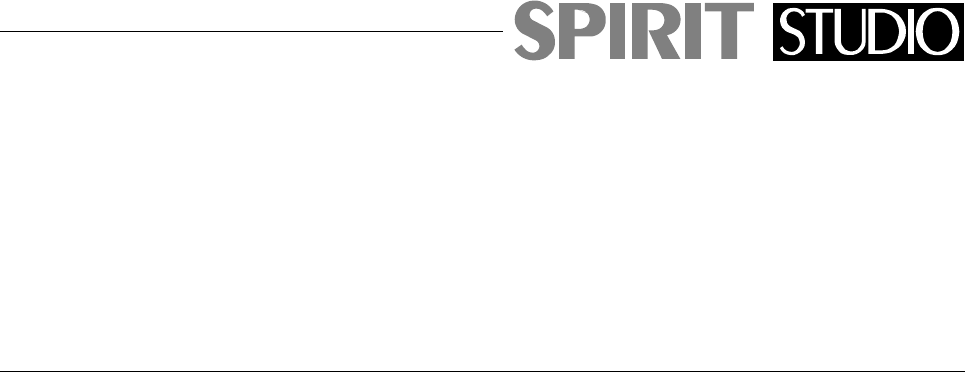
Avoid running audio cables or placing audio equip-
ment, close to thyristor dimmer units or power cables.
Noise immunity is improved significantly by the use of
low impedance sources, such as good quality profes-
sional microphones or the outputs from most modern
audio equipment. Avoid cheaper high impedance mi-
crophones, which may suffer from interference over
long cable runs, even with well-made cables.
Fault Finding GuideFault Finding Guide Repairing a sound mixing console requires specialist
skills, but basic Fault Finding is within the scope of any
user if a few basic rules are followed.
• Get to know the Block Diagram of your console (see
inside rear cover)
• Get to know what each component in the system is
supposed to do.
• Learn where to look for common trouble spots.
The Block Diagram is a representative sketch of all the
components of the console, showing how they con-
nect together and how the signal flows through the
system. Once you have become familiar with the vari-
ous component blocks you will find the Block Diagram
quite easy to follow and you will have gained a valu-
able understanding of the internal structure of the
console.
Each Component has a specific function and only by
getting to know what each part is supposed to do will
you be able to tell if there is a genuine fault! Many
faults are the result of incorrect connection or control
settings which may have been overlooked.
Basic Troubleshooting is a process of applying logical
thought to the signal path through the console and
tracking down the problem by elimination.
• Swap input connections to check that the source is
really present. Check both Mic and Line inputs.
• Eliminate sections of the channel by using the insert
point to re-route the signal to other inputs that are
known to be working.
Page 9


















